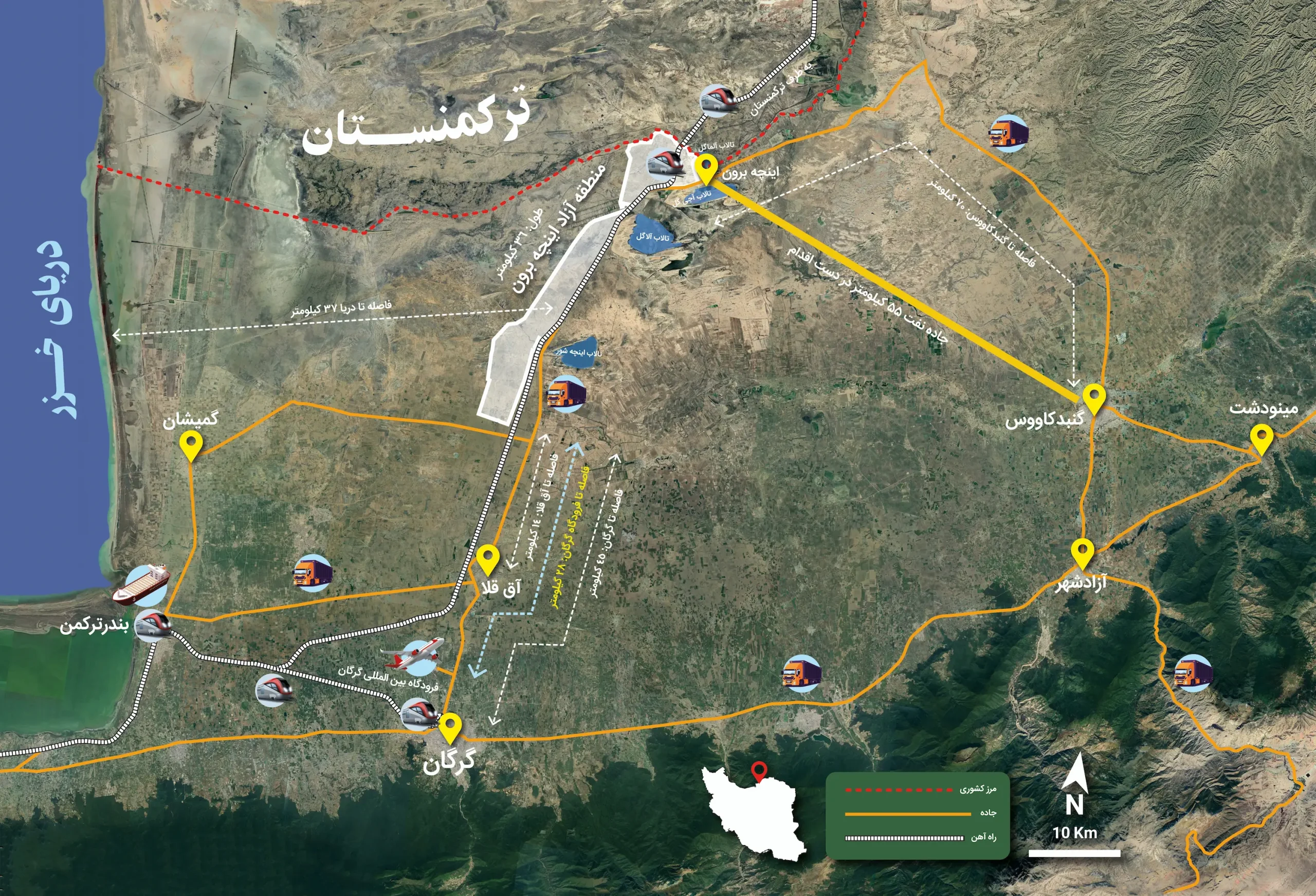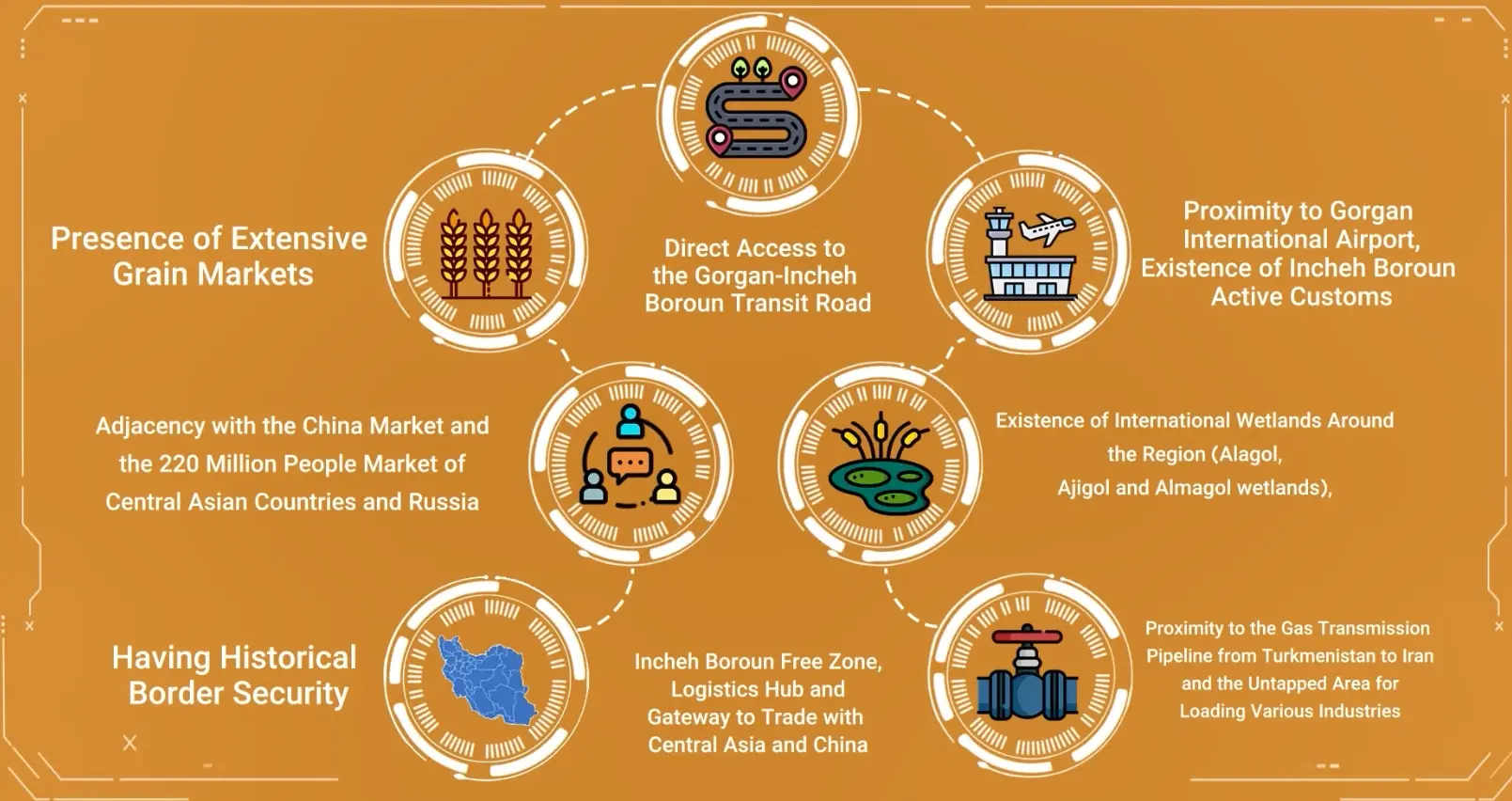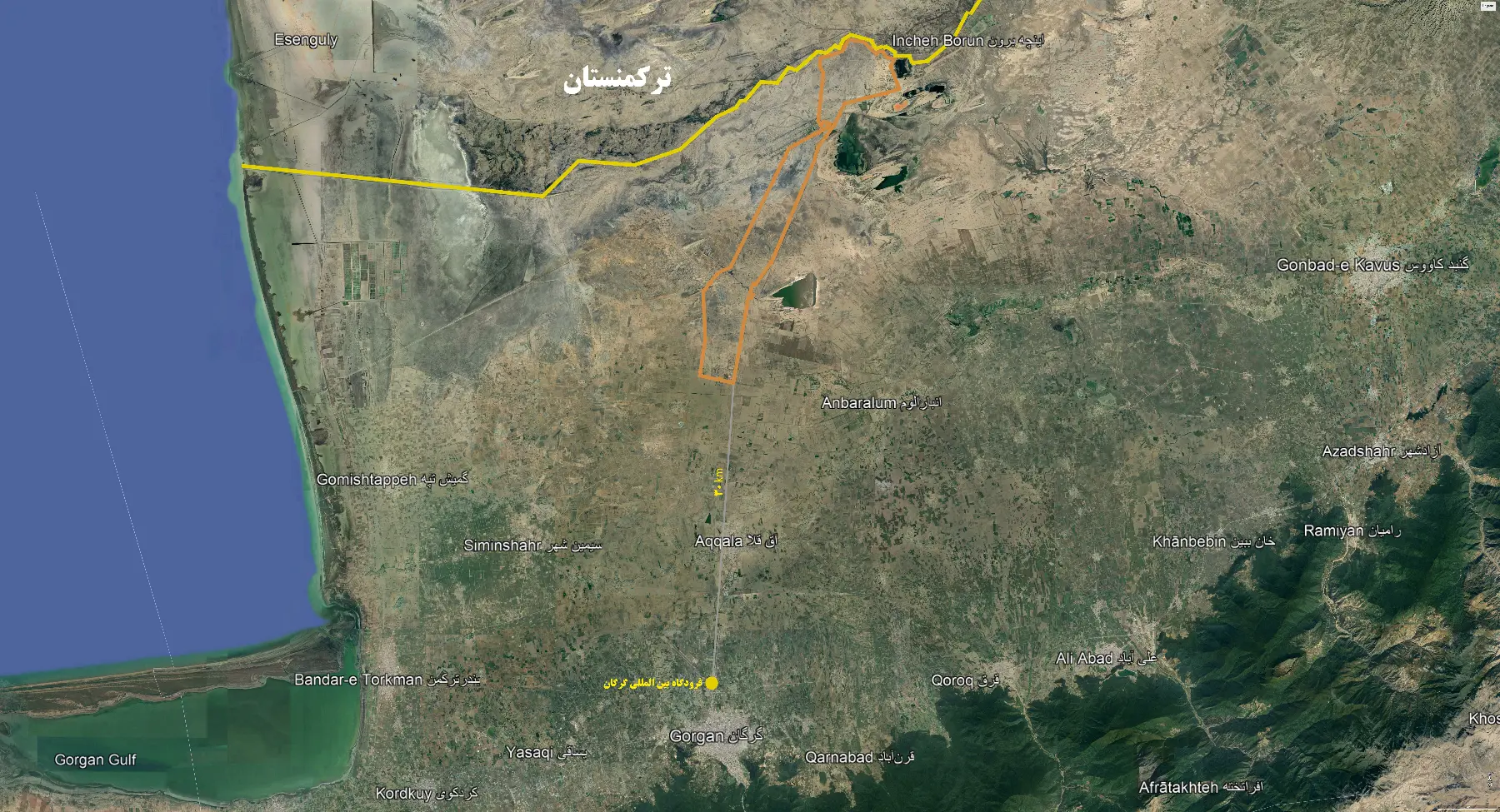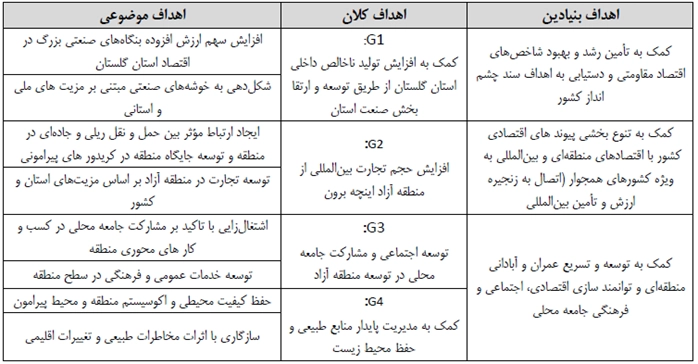The boundaries of Incheh Borun Free Zone
Incheh Borun Free Trade Zone with a strategic location on the Iran-Turkmenistan border
Incheh Boroun Free Zone in the north of Golestan province, 40 km from Gorgan city, with an area of 12577 hectares, is limited from the north to the border of Turkmenistan and from the south to the Golestan Petrochemical Complex. This area is located in a 36 km long area, parallel to the Gorgan-Incheh Boroun railway.
The special geopolitical and geoeconomic position of Incheh Boroun Free Zone for crossing the KTI regional corridor (Iran, Turkmenistan, Kazakhstan railway line), the East-West International Corridor BRI (China’s Belt and Road Initiative) and the North-South International Corridor INSTC on the eastern branch of the Caspian Sea from Mumbai, India to Helsinki, Finland, having historical border security, proximity and connection with the China’s market and the 220 million people market of Central Asian countries and Russia, the presence of extensive grain markets, direct access to the Gorgan-Incheh Boroun transit road, proximity to Gorgan international airport, the presence of the active Incheh Boroun customs office, the existence of international wetlands around the region (Alagol, Ajigol and Almagol wetlands), the existence of a border market, the proximity to the gas transmission line from Turkmenistan to Iran, and untapped area for the loading of various industries, makes the Incheh Boroun Free Zone a potential logistics hub and gateway to trade with Central Asia and China.



Fundamental, macro, and thematic objectives of establishing the Incheh Borun Free Trade-Industrial Zone

Extracted strategies for the development of the Inche Barun Free Zone from the horizon development document 1414 of Golestan province
Business:
- It has developed and modern agriculture in the production and export of strategic products, especially wheat, cotton, garden products, oilseeds, livestock and poultry, aquaculture and horse breeding.
- Commercial development by exploiting the international sources of entry and exit of goods from the region to Central Asian countries in the east of the Caspian Sea
Logistics and transportation:
The gateway to Central Asia, the sea port on the east coast of the Caspian Sea and the rail corridor (equipped with high-speed trains), sea, freeway and air corridors
Industry and mining:
- It has a complete chain of post-modern and pre-modern industries related to the activities of the agricultural and mineral sectors.
- active in the oil, gas and petrochemical industries, supporting the production of new, clean and renewable energies in the country and extensive cooperation with the countries of the Caspian region in the field of swapping energy carriers and its products
Agriculture:
- Pole of sturgeon and shrimp production in the north of the country
- Production pole of medicinal plants and ornamental flowers
The extracted strategies for the development of the free zone are out of the country's land survey document
- Strengthening the infrastructure of connecting border cities to markets and distribution centers and supplying goods and products on both sides of the border
- The development of internal communication infrastructures with border bases in compliance with the defense, security and passive defense considerations of northern bases, especially Inche Barun.
- Marketing, production and commercialization of products and goods needed by countries in the region with an emphasis on joint investment
- Transformation in the operation of the free and special economic zones of the country to the hub of export processing and attracting capital, science and technology and playing a role in the national, regional and international economy.
- Linking the international flows from east to west and north to south by passing through the territory of Iran land and sea passage – the connection of the Caspian Sea border countries with the priority of the north-south passage .
- – Strengthening the effective role of Iran in the development and commercialization of the transit corridors in the region to reach the target markets, including the communication axis of the border points of Inche Barun , Sarkhs and Lotfabad with the country of Turkmenistan
- – Creation and development of hardware and software infrastructures and superstructures of logistics centers in border areas with priority in Mirjaveh, Milk, Mahirod, Dogharon Shemtigh, Sarkhes, Inche Brun , Astara, Bazargan, Bashmaq, Khosravi, Shalamcheh, Chabahar, Jask, Bandar Abbas areas. , Bushehr, Imam Khomeini Port, Amirabad Port and Anzali Port
- Amendment and improvement of laws and regulations in order to be compatible and coordinated with the international laws of transportation and transit
- Implementation of international customs and transport agreements and conventions in transit passages to facilitate transit and reduce transit time.
- Networking and creating new international production chains and improving the country’s international position in global markets, especially in the field of energy and developing regional and international exchanges.
- Decrease in the raw sale of minerals and increase the added value of the industry and mineral industries from the country’s gross domestic product
- Forming and completing the value chain and developing the export of industrial products and mineral industries with priority for products with high added value
- Improving and developing production and value-creating support services , including in the fields of financial mediation, insurance, consulting, construction designs, information and communication technology, and scientific research and development.
- Herbst’s approach to the development of clusters in towns, industrial and mining areas
- Strengthening activity chains based on sea-based industries in the north and south coastal axis (logistics and commerce).
- Development of small and medium industries with emphasis on establishment in border areas
- Organization and development of value chain and fisheries supply
- Creating value chains of transnational agricultural products and expanding extraterritorial cultivations with an emphasis on the production of non-transgenic and water-based products.
